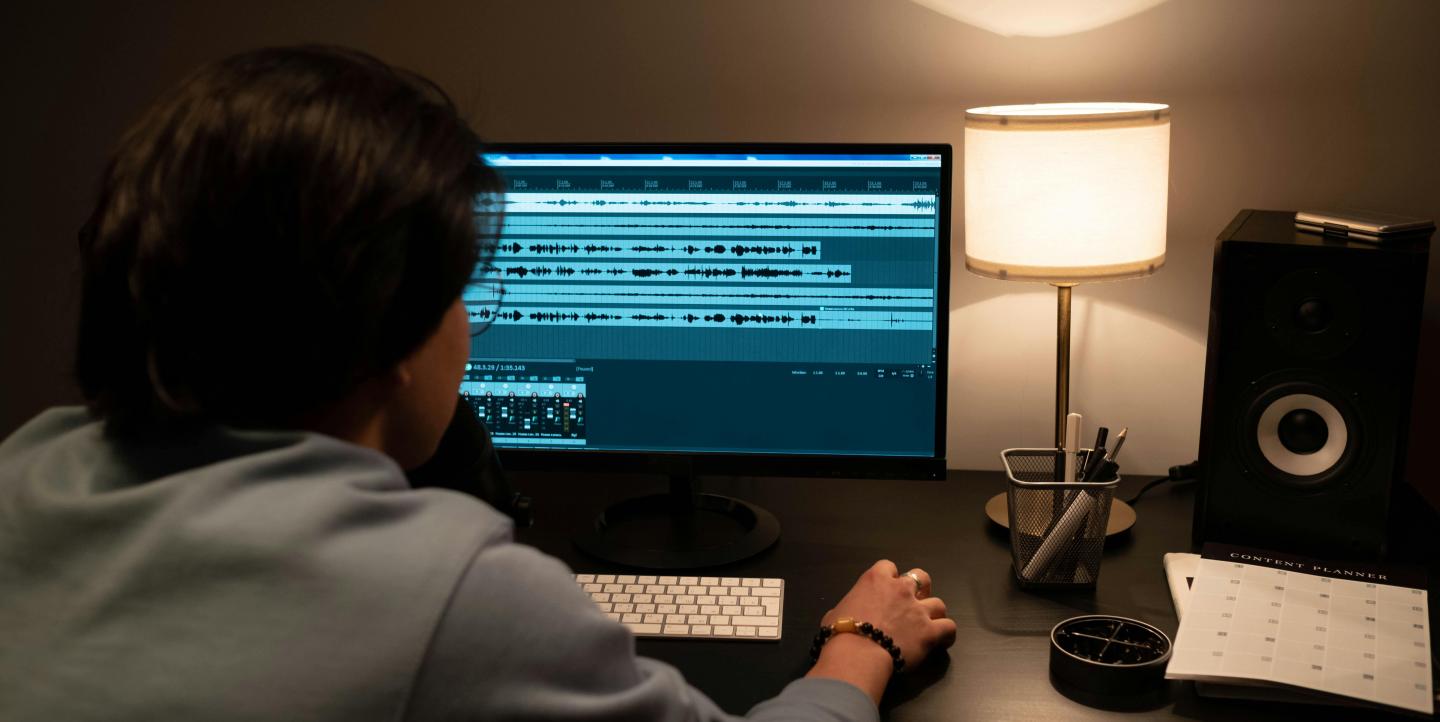Examining audio recordings to determine their authenticity and verify the content within can be critical for journalists conducting investigations. Forensic audio analysis, however, often is underutilized and can be difficult to conduct due to challenges presented by inconsistent sound environments, audio distortion, and more.
“It is difficult to verify what you cannot see since the rule of evidence has always relied on sight, feel and touch. It makes verifying audio deepfakes challenging for journalists,” explained Silas Jonathan, head of digital investigations at the Centre for Journalism Innovation and Development, during a Global Investigative Journalism Network webinar in April.
Ahead of the 2023 presidential election in Nigeria, Jonathan used AI Voice Detector to debunk an audio recording of a conversation between the Labour Party candidate, Peter Obi, and the General Overseer of the Living Faith Church, David Oyedepo, in which Obi described the election as a religious war. Many people mistakenly thought the conversation, which circulated on social media, was real. In a country deeply rooted in religious diversity, it threatened to provoke fear, anger, and violence. “It was not Obi, it was a deepfake generated using AI,” Jonathan noted.
For journalists interested in boosting their own investigations, below is guidance from audio forensics experts along with suggestions of relevant tools.
(1) Recognize that audio can be manipulated, and how to spot inconsistencies
Journalists must be aware, in the first place, that audio can be manipulated and that deepfakes exist, said Jonathan.
“Journalists should have the critical thinking to be able to identify gaps in doctored audio,” he said. “When you listen to audio deepfakes, the pronunciation of gerunds is always shaky; you can tell that it isn’t human. You might think it is original when you don’t listen carefully.”
Note any unnatural pauses or stutters that may indicate an audio deepfake, he continued. “If the speaker’s speech pattern suddenly changes or there are long pauses between words that are not typical of their natural speech, it could be a sign of a deepfake.”
If you are familiar with the voice in question, you can compare it with verified recordings. “You can identify subtle differences in their voice, such as tone or accent, that are not present in the deepfake,” Jonathan said. “You may also want to consider the context of the conversation — if the topic or style seems unusual or out of character for the speaker, it could be a sign of a deepfake.”
(2) Authenticate recordings
Always authenticate the audio you use in your investigation to ensure that it has not been edited or manipulated. Knowing where the materials are sourced from helps ensure the reliability of audio evidence.
“Verify whether or not recordings were edited or things were added in. If anything was added in, you will most likely find irregular breaks in the electro-magnetic interference,” said Lawrence Abu Hamdan, the founder and director of investigations at Earshot, during a Wits Centre for Journalism webinar.
Earshot is an organization that utilizes audio forensic analysis to conduct audio investigations focused on human rights and environmental advocacy. It also trains journalists on aspects such as audio ballistic analysis, sonic profiling of aircraft, and more.
(3) Collaborate with technologists
Journalists should partner with technologists who understand audio forensics. Audio forensics software typically requires technical knowledge and costs money to use, both of which can be challenges for users.
“Some of them are code-based, and that is hard for journalists who do not have the technical capacity,” said Allan Cheboi, a digital forensics specialist at the Centre for Information and Data Analysis. “Working with those who have the expertise can help you understand how audio looks and make your work easier.”
Earshot, explained Hamdan, is part of the Deepfake Rapid Response Force, which links fact checkers and journalists with experts in media forensics, AI synthesis, and deepfakes to provide thorough investigation of content suspected of being generated or manipulated using AI.
(4) Upskill
In order to carry out forensic audio investigations, journalists should acquaint themselves with specialized tools. They must use them with a critical eye, as the tools can make mistakes. “Always do a lot of comparison and listening before subjecting your audio to further checks with tools,” advised Jonathan.
They should also build coding skills and have accounts on GitHub and Gitlab, which provide free software that can be used for audio forensics, suggested Cheboi.
What follows are suggestions of tools for journalists familiarize themselves with to enhance their forensic audio investigations.
Audacity
Audacity, which is primarily used for recording, also allows users to examine audio files to identify potential manipulations and enhance audio quality for clearer analysis. As with other tools on this list, it makes use of features such as spectrograms and level meters to provide visual representations of audio.
Cost: Audacity is free and open-source.
Adobe Audition
This tool can be used to compare audio wavelengths to determine if a recording was manipulated, and to identify inconsistencies. It also enhances audio clarity to enable analysis.
Cost: Monthly subscription is US$24.71.
Izotope RX
Izotope RX is an audio repair software that allows users to remove background noise and restore damaged audio.
Cost: The software comes in three different packages — Element, Standard and Advanced — with monthly subscription costs of $19.99, $399 and $1,199, respectively.
AI or Not
AI or Not is an open-source tool that can detect AI-generated audio and determine if the content is fake or not.
Cost: A monthly subscription of $5 allows for five audio checks.
AI Voice Detector
This AI-powered tool detects if audio is real or AI-generated. It also analyzes voices to identify similarities and differences in tone, pitch, and speaking style.
Cost: Monthly subscription of $12.99.
Photo by cottonbro studio via Pexels.

